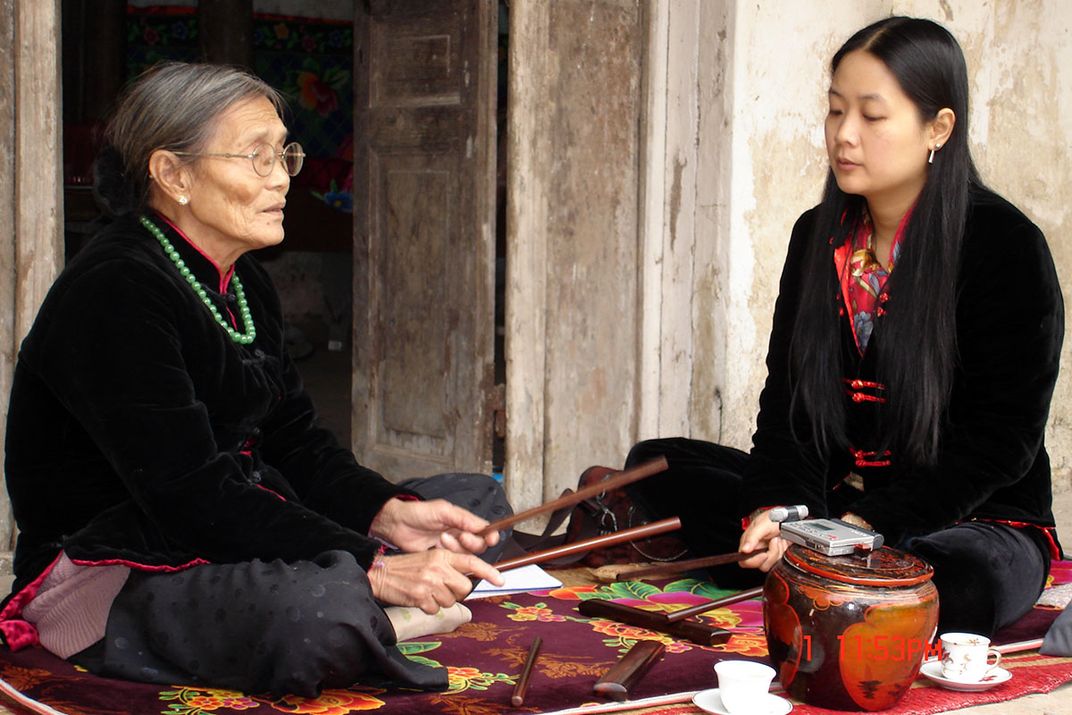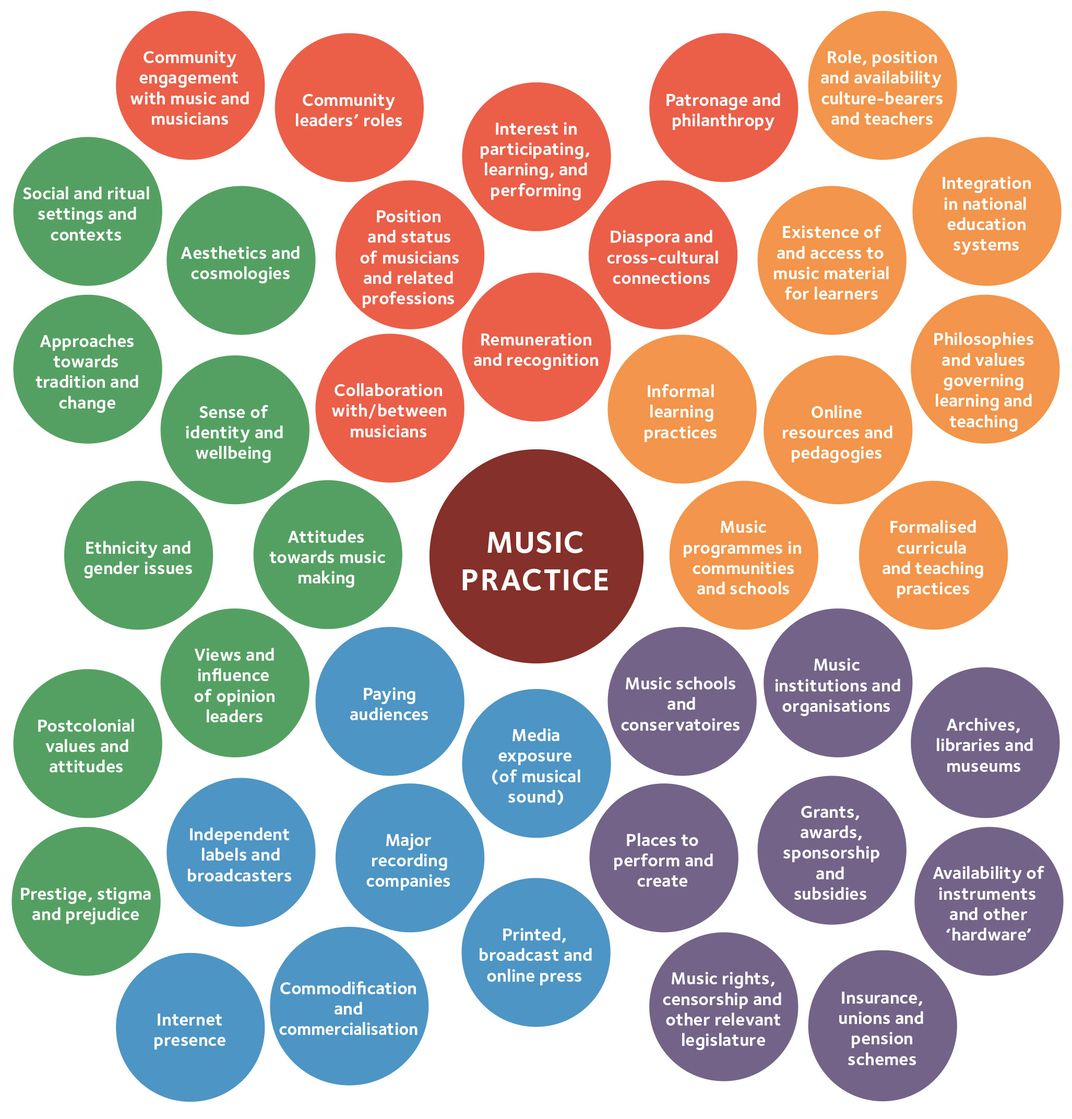How We Can Support the World’s Rich Musical Diversity
Some music thrives, while other musical traditions are on the verge of disappearing
/https://tf-cmsv2-smithsonianmag-media.s3.amazonaws.com/filer/29/5e/295eeaa7-49f6-40fa-bf4a-28d54fc9ca9b/cfts10104.jpg)
When I wake up, I go through my music collection to find the music I feel like hearing. It may be a Bach concerto, an old Lead Belly album, an Indian morning raga, or one of my favorite contemporary African pop stars. When I drive to work, I can effortlessly flip channels between pop, rock, jazz, country, bluegrass, opera and the Wiggles, depending on mood and company. My phone extends and personalizes the choice almost infinitely.
We take this musical diversity for granted, just as we can casually decide for Italian, Mexican, Thai, or Lebanese food when we crave those tastes. The diversity of people, histories and cultures in this country has led to a rich variety of sounds, styles and genres that can keep us exploring for a lifetime.
When you come to reflect on it, this is quite surprising. The engagement with music is one of the most universal activities of humans that does not have a direct link to our survival as a species. Nobody ever died from music depravation, yet we work and worship to music, dance and court to music, make love and relax to music, rejoice and grieve with music.
With the developments in migration, travel and technology over the past 70 years (which in retrospect we will probably regard as the most significant period of musical change of the past two millennia), two important things have happened.
The first is that we have millions of pieces of music from all over the world at our fingertips. CDs, DVDs, downloads, YouTube and other streaming offer a baffling choice of musics. It is good to remember that less than 300 years ago, Johann Sebastian Bach had to walk through the rain for days (and almost lost his job) just to hear Buxtehude, another organist, play in a church in Lübeck.
The other major effect is that a great number of “small musics” are being marginalized. Just as we can access music from inner Mongolia and the Amazonian rain forest, people in those regions are listening to Christian hymns, military band tunes and Western pop music, often pushed with considerable force by missionaries, colonial powers, and the—now effectively collapsed—international music industry that has for more than a century largely determined what we listen to.
While musics have always emerged and disappeared through changing tastes or circumstances, some “small musics” are —in the words of former Smithsonian Folkways director Tony Seeger—“being disappeared” by non-musical influences and powers. That is causing a substantial reduction in the diversity of music we can access and enjoy now, and even more so in the future.
As an academic, it is tempting to seek out such musics in need so that they can be recorded and described for future generations. In that way, a picture of the musical sound and some knowledge of its context can be preserved. But this “salvage ethnomusicology” does not create a future for the living, breathing tradition, which has the power to engage, involve and excite.

I realized this when I first visited Vietnam more than 10 years ago. Escaping from the traditional tourist outing at a music education conference, I joined a faculty member of the National Academy of Music for a visit to her ca trù teacher in a small village outside Hanoi. I heard the refined sung poetry accompanied by a long-necked lute and clapsticks, and learned the genre had all but died. Since the 1950s, the government had discouraged the tradition because of its association with decadence.
While it had blossomed in the first half of the century, now there was virtually no performance practice, no transmission system, no audience, no support from patrons or government and no media exposure. In other words, the cultural ecosystem that tends to support music practices around the world had collapsed for ca trù.
The plight of ca trù prompted memories of other music practices I had come to know: the Western classical music I grew up with, the North Indian classical music I had been studying for 30 years, and the many traditions I had encountered through my long involvement with world music initiatives: Spanish flamenco, West African percussion, Indonesian gamelan, Turkish saz, Japanese traditional music, etc.
Somehow, it seemed that the vibrancy of a music practice could not be explained simply by referring to the beauty of its sound or the complexity of its structure (even if we could agree on who is qualified to judge that across cultures). Rather, a complex web of external forces appeared to be in play.
Sharing these ideas with dozens of colleagues in music business, performance, education, policy and research, we came to define five domains—or clusters of forces—that seem to impact the sustainability of most music practices: systems of learning music; musicians and communities; context and constructs (the values and attitudes underlying how any music practice is created, learned, and performed); infrastructure (the hardware of music, from instruments to concert halls) and regulations (including copyright laws, subsidies and taxes); and media and the music industry. Virtually every music practice deals with each of these five domains in negotiating its place in the contemporary world of sound.
We were fortunate to receive generous funding from the Australian Research Council to spend five years to test this idea on nine very different music practices spanning the gambit from very vibrant to moribund (not likely to survive beyond this century). As part of our international research collaboration Sustainable Futures for Music Cultures (2009-2014), nine international research teams carefully examined traditions ranging from Mexican mariachi to Korean samulnori; from Indian ragas to West African ewe dance-percussion; and from Aboriginal women’s songs in Central Australia to Western opera.

From this research, a picture of a fine-mazed net of forces working on the sustainability of any music practice emerged. In each domain, there were a number of prominent forces: engaged communities, well-developed systems of handing down the music, laws and infrastructure conducive to vibrant music-making, quality exposure through media and on the Internet, and a high regard for the music practice. These can be found (clockwise) in the model we developed to render a generic representation of “Ecosystems of Music.”
For ca trù, this model may be the key to a new lease on life. Musicians and sympathizers are helping to restore transmission processes and a sense of community by reviving the guilds that used to play a central role in the practice. The prestige drastically increased once the government succeeded to get it recognized by UNESCO as Intangible Cultural Heritage in 2009. Government rules once condemning the practice of the genre have now made place for support; and the media is giving greater attention to this important part of the Vietnamese musical legacy. In addition, several ca trù guilds are now performing for a substantial and culturally engaged tourist market in historical venues in Hanoi, bringing in money to support the musicians.
These forces factor differently in the precise working of each music practice. We found the role of media to be central in Hindustani music, but only marginal in Central Australia. Some music practices (like opera) need extensive infrastructure and financial support, while others (like mariachi) have very modest needs. In general, we found that mapping out all these forces gave a fairly accurate impression of the strengths and challenges for the nine music practices in their present-day realities.
In addition, the essentially dynamic nature of this model provides new perspectives on the high-profile initiatives based on UNESCO’s 2001, 2003 and 2005 Declarations and Conventions, which have unmistakably raised global awareness of threats to intangible cultural heritage like never before. However, these—largely government-driven—initiatives have tended to approach music practices as artifacts rather than as living practices, which can help preserve music as product but runs the risk of losing its connection to community and ongoing creativity, widely seen to be hallmarks of living traditions.
We are living in a time when many music cultures are in a critical state of survival in terms of support, exposure, prestige, transmission processes and infrastructure. This is the time for all of us who love, make, or work in music to collaborate with communities across the world to empower them to forge musical futures on their own terms. As we have seen in our research, both small and major gestures make a difference for music practices in transition and at risk, especially if the driving force behind this is not nostalgia or neo-colonialism, but appreciation of the idea that with a little effort and insight, it is possible to negotiate ecologies of musical diversity in a globalized, mediatized world.
A version of this article was originally published in the online magazine of the Smithsonian Center for Folklife and Cultural Heritage.
/https://tf-cmsv2-smithsonianmag-media.s3.amazonaws.com/accounts/headshot/HuibSchippers10056.jpg)
/https://tf-cmsv2-smithsonianmag-media.s3.amazonaws.com/accounts/headshot/HuibSchippers10056.jpg)